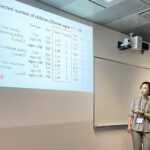The field of International Institutional Studies focuses on how diverse states and non-state actors around the world can cooperate to design institutions that serve human beings. It is my honor to introduce a fundamental book in the field, Managing the Frozen South: The Creation and Evolution of the Antarctic Treaty System (University of California Press, 1988). The author, Professor M.J. Peterson, is a pioneer of this field and an important mentor for me in that she opened the door to the study of the United Nations General Assembly.
This book depicts the international regime of Antarctica as something that has been determined by three factors; the saliency of the focal points, the stakes of each country, and the coalition politics on the international stage. It also describes how not only governmental representatives, but also firms, environmental lobbyists, and intergovernmental coalitions are influential. In fact, the focal points regarding “Antarctica” have changed over time, regarding whether respective countries interpret the continent as a part of their sovereign territory, the waters where whaling are conducted, or as the reserves of future resources. It also discusses how the voices of specific interest groups may be over-emphasized within the domestic politics of even a large or powerful country, thus becoming the position of state representatives, and also how their views will not make it to the international podium unless they come to terms with other representatives on the topic.
As natural as it may be today to relate Antarctica with security issues, environmental problems, or economic interests, it is moving to look back on the days when the continent was a “fresh canvas.” Professor Peterson’s work illuminates how numerous parties have taken part in designing Antarctica amidst a fierce battle of stakes in the contexts of the Cold War and the North-South divide.
While international discussions around Antarctica have evolved, academia has also elaborated on the three themes that Professor Peterson raises to be essential in analyzing regimes. For example, recent literature on international institutions explores how the international regime may change with the rise of China, or how each state will leverage different arenas as the layers of international regimes overlap. While we often tend to emphasize the contemporary topics relevant to research questions or the changes in research methods, I believe that the curiosity behind such research is well represented in this book; the generalizable theorization of the establishment of international institutions amidst complex politics matters. I look forward to constantly coming back to this book to keep track of my point of departure, and to following the latest works by Professor Peterson.
(Illustration by Atelier Epocha)
This article is also avairable in Japanese. »
「「南極」を世界がデザインするとき」(高橋知子)






